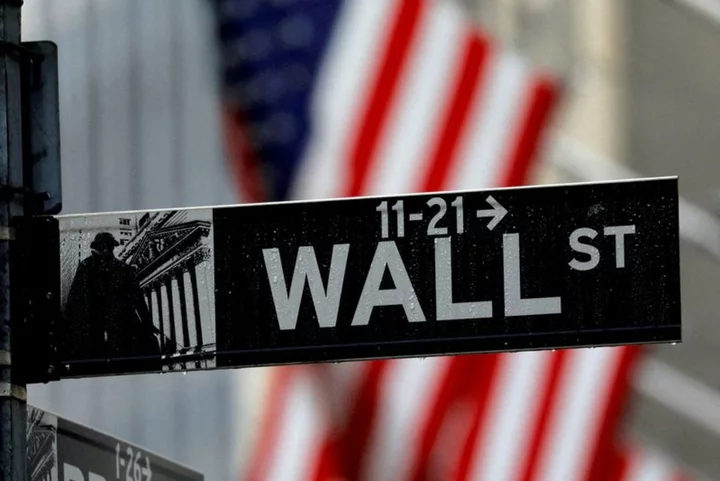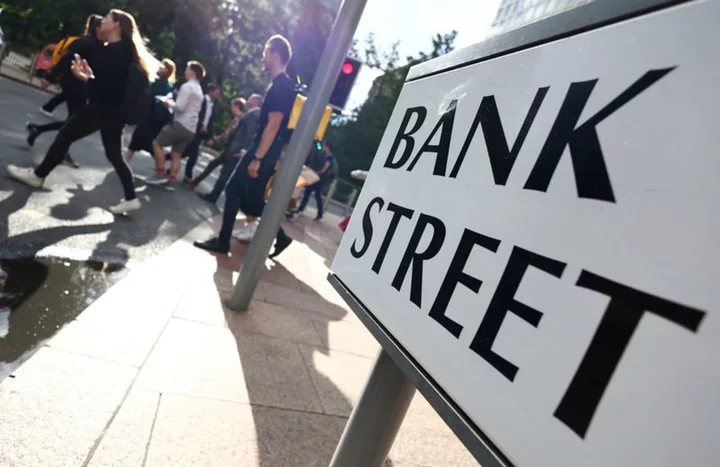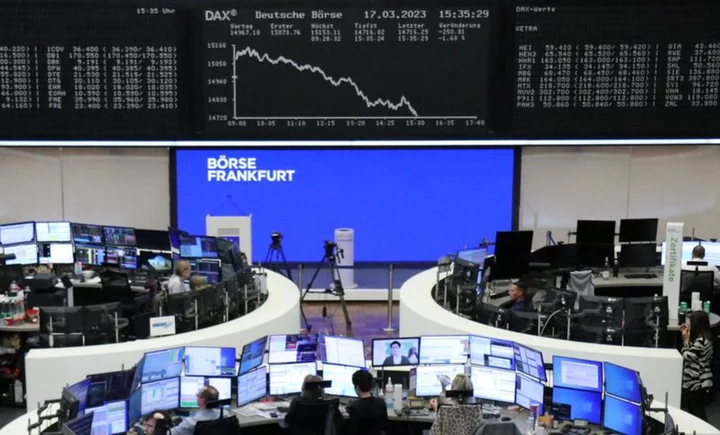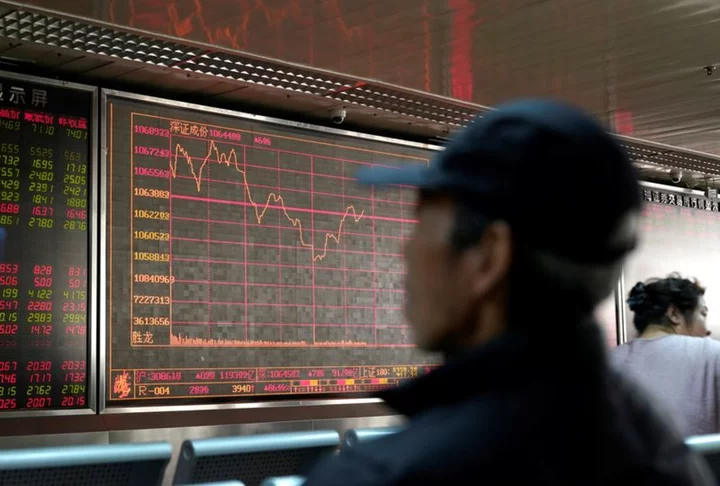A look at the day ahead in U.S. and global markets from Mike Dolan, Editor-at-Large, financial industry and financial markets
As investors switch attention to the health of the U.S. consumer, a funk in China's economy, markets and currency appeared to deepen and emerging market ructions spread.
After another disappointing reading for industrial production and retail sales this month, China's central bank scrambled to cut 1-year lending rates by 15 basis points to 2.50% - the second cut in policy rates in three months - and sent the yuan sliding to 2023 lows against the dollar.
China stocks fell again and 10-year government bond yields fell to three-year lows.
Perhaps more worrying for those fretting about the broader stability of China's economy, the corrosive real estate bust saw property investment fall for the 17th straight month amid creeping deflation fears and the government suspended publication of spiralling youth unemployment rates.
The contrast with the U.S. picture is stark right now.
The ongoing reassessment of the U.S. economy now has as many as three in four fund managers around the world assuming there will either be a soft landing or even no landing for the economy over the next 12 months, according to Bank of America's latest monthly investor poll.
As cash holdings have been reduced in August, asset managers have reduced their underweight equity positions and, rather surprisingly given the hit to bond prices this month, upped global bond allocations to a net 5% overweight. The latter is now some 2.2 standard deviations above long-term averages.
And yet, in part due to a rethink of the long-term sustainable interest rate over the horizon, long-term U.S. Treasury yields continue to climb - even in tandem with a tech-led rebound in stock prices on Monday. Ten-year Treasury yields hit their highest for the year at 4.23%.
With inflation expectations subdued, 10-year inflation-adjusted Treasury yields hit their highest in 14 years at 1.87% - with eyes now trained on any long-term Fed guidance from its annual Jackson Hole conference later this month.
A combination of rising real U.S. yields and robust readings for the U.S. economy - which should be reinforced by the July retail sales report on Tuesday - and increasingly turbulence in China and many emerging economies is supercharging the dollar in many quarters.
Despite news of forecast-beating accelerating growth in Japan in the second quarter, the yen skidded to its lowest in 10 months on Tuesday alongside the yuan slide.
Elsewhere in the so-called BRICS emerging economies - the grouping of Brazil, Russia, India, China and South Africa - the dollar was also in command.
Isolated economically and financially from the West for over a year after its invasion of Ukraine, Russia raced to shore up its plummeting rouble on Tuesday with an emergency interest rate hike of 3.5 percentage points to 12% - with only modest success so far.
Jarred by the surprise emergence of a far-right presidential candidate in Argentina's primary elections - who has an agenda to dollarize the hyperinflation-dogged economy - the peso was devalued again on Monday. Argentina's incumbent government wants to join the BRICS grouping too.
And even India's rupee was on the slide to a 10-month low.
Back stateside, the retail sales report will be accompanied by an earnings update from Home Depot - the first of the big retailers to report this week. Housing market sentiment indicators are also out.
S&P500 futures were off a touch before the open.
Events to watch for on Tuesday:
* U.S. corporate earnings: Home Depot, Agilent Technologies, Cardinal Health, Jack Henry
* U.S. July retail sales, July import/export prices, NAHB August housing index, NY Fed August manufacturing, June TIC data on Treasury holdings, June business inventories; German August ZEW investor survey; Canada July inflation, home sales and June manufacturing
* Minneapolis Federal Reserve President Neel Kashkari speaks
(By Mike Dolan, editing by Susan Fenton; mike.dolan@thomsonreuters.com. Twitter: @reutersMikeD)









